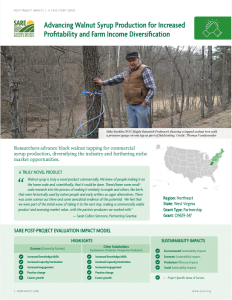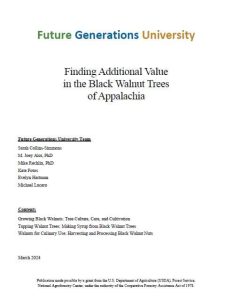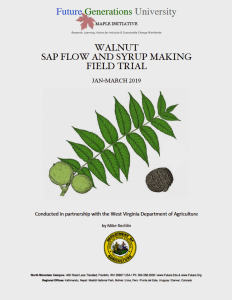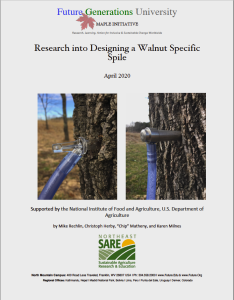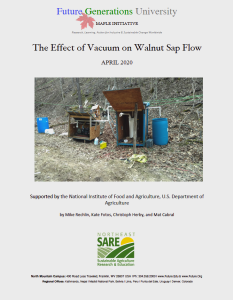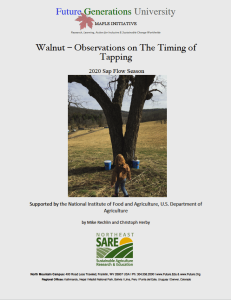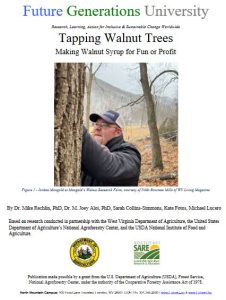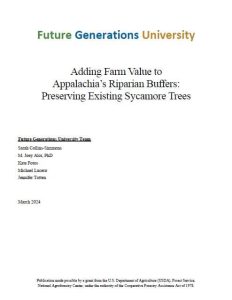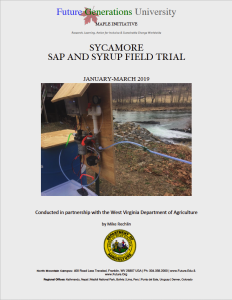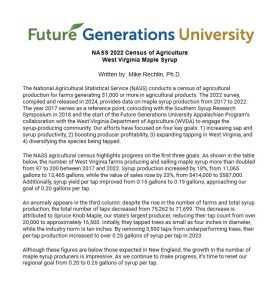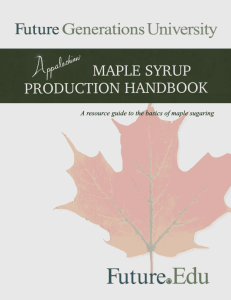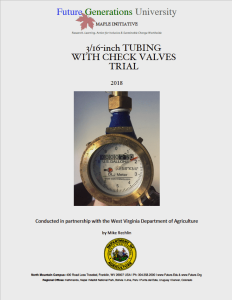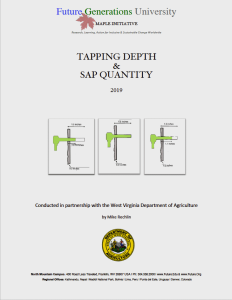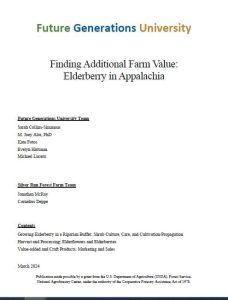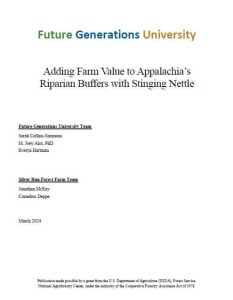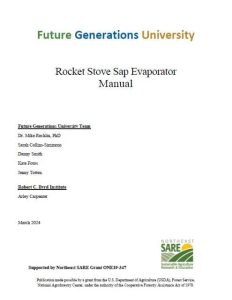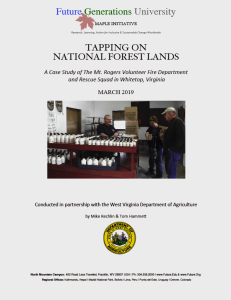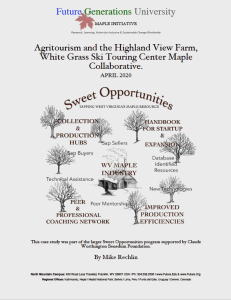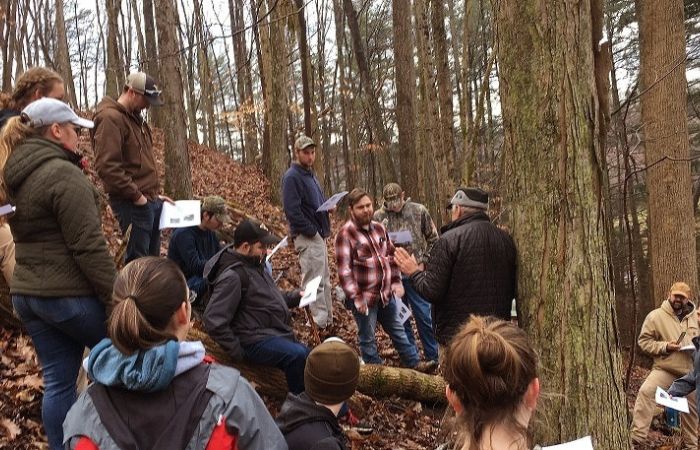
Free downloadable resources
Questions, need more information? We are here to help. Please use this form to let us know your needs.
Walnut
Advancing Walnut Syrup Production for Increased Profitability and Farm Income Diversification:
SARE post-project impact report: Researchers advance black walnut tapping for commercial syrup production, diversifying the industry and furthering niche market opportunities. Download
Finding Additional Value in the Black Walnut Trees of Appalachia:
Throughout the world, walnut tree species have long been held in high regard, and the predominant native North American species, black walnut or Juglans nigra, is considered a prime species for a myriad of reasons. It is native from Massachusetts down to northwestern Florida and as far west as southern South Dakota down to Texas. Download
Walnut Sap Flow and Syrup Making Field Trial, Jan-March 2019 by Mike Rechlin:
This report summarizes the experiences of a major field trial in walnut tapping at the Dry Fork Maple site conducted by Future Generations under a WVDA research contract. It also integrates work done by two producers in WV and the Virginia Tech Catawba Farm in VA. Download
Research into Designing a Walnut Specific Spile, April 2020, by Mike Rechlin, Christoph Herby, “Chip” Matheny, and Karen Milnes:
This report details an initiative conducted through the 2019-2020 sap flow season to design and test a spile specific to walnut trees. Drawing off of findings from the 2019 “Walnut Sap Flow and Syrup Making Field Trial” the longer, more highly tapered spile design aimed to counteract problems identified in the previous study. This research was conducted with support from the Northeast Sustainable Agriculture Research and Education program. Download
The Effect of Vacuum on Walnut Sap Flow, April 2020, by Mike Rechlin, Kate Fotos, Christoph Herby, and Mat Cabral:
This report details an initial study on the effects of vacuum on walnut sap production. With low vacuum, averaging 8-inches Hg, sap flow doubled (p<0.05). Late in the season, the research team connected a larger pump, which pulled 20-inches Hg. Though not enough runs were conducted to determine a statistical difference, in initial observations, walnut trees produced over double the sap under higher vacuum. This research was conducted with support from the Northeast Sustainable Agriculture Research and Education program. Download
Walnut – Observations on The Timing of Tapping, 2020 Sap Flow Season by Mike Rechlin and Christoph Herby:
This report discusses an initial study on the proper time to tap walnut trees. Walnut trees are anatomically different from maple trees, indicating that they may have a different sap flow season. In the initial study, the data shows that walnut trees run concurren to maples. However, a single tap placed in late April produced an equal amount of sap in half a day as a tap did on average over the whole maple sap season. This research was conducted with support from the Northeast Sustainable Agriculture Research and Education program. Download
Tapping Walnut Trees: Making Walnut Syrup for Fun or Profit by Mike Rechlin:
This report summaries the scientific and practical research on black walnut syrup production conducted by Future Generations University. It contains all the necessary information that would allow an existing maple syrup producer to expand into walnut syrup, and contains research findings and directions that will be of use to other researchers and to more experimental producers. Download
Sycamore
Adding Farm Value to Appalachia’s Riparian Buffers: Preserving Existing Sycamore Trees
While maple syrup is internationally famous, it is not the only tappable sap producing tree. The American sycamore (Plantanus occidentalis) is a diffuse porous hardwood that produces a sugary sap that can be turned into syrup. Sycamores go through the same process in early spring as maples to get ready for the next growth season. Download
Tapping Walnut Trees: Making Walnut Syrup for Fun or Profit by Mike Rechlin:
This report summaries the scientific and practical research on black walnut syrup production conducted by Future Generations University. It contains all the necessary information that would allow an existing maple syrup producer to expand into walnut syrup, and contains research findings and directions that will be of use to other researchers and to more experimental producers. Download
Maple
NASS 2022 Census of Agriculture West Virginia Maple Syrup:
The National Agricultural Statistical Service (NASS) conducts a census of agricultural production for farms generating $1,000 or more in agricultural products. The year 2017 serves as a reference point, coinciding with the Southern Syrup Research Symposium in 2018 and the start of the Future Generations University Appalachian Program’s collaboration with the West Virginia Department of Agriculture (WVDA) to engage the syrup-producing community. Future Generations University’s efforts focused on four key goals: 1) increasing sap and syrup productivity, 2) boosting producer profitability, 3) expanding tapping in West Virginia, and 4) diversifying the species being tapped. Download
Appalachian Maple Syrup Production Handbook:
A resource guide to the basics of maple sugaring. Download
West Virginia Sugar Operation Review Preparedness Manual & Regulatory Guidelines, By Britney Hervey Farris:
This manual is a step by step guideline for making your syrup making facility is ready for the production of food products. Download
West Virginia Sugar Operation Review Preparedness Manual & Regulatory Guidelines-Appendix:
Appendix for the above handbook and manual. Download
3/16-inch Tubing with Check Valves Trial, 2018 by Mike Rechlin:
Using two parallel sap lines, the effectiveness of check-valve (CV) spouts was tested. During the testing period, there was a warm spell with temperatures reaching above 70 degrees and not reaching below freezing. After the warm spell the CV spouts should have much higher sap production than the non-CV spouts, ending the season with the CV spouts producing 37% more sap than the normal spouts. This study was conducted with support from the WVDA through a Specialty Crop Block Grant. Download
Tapping Depth & Sap Quantity, 2019 by Mike Rechlin:
This study discusses the effects of driving taps deeper into the drilled tap hole. By driving the tap an extra ¾-inch into the drilled hole, a producer reduces their sap output by 60%. Which means, for every extra hammer hit past the taps natural seating position, the producer decreases their output by 20%. This study was conducted with support from the WVDA through a Specialty Crop Block Grant. Download
Other Resources
Finding Additional Farm Value: Elderberry in Appalachia
This plant, known as American elderberry, American elder, American black elderberry, common elderberry, or by its scientific name Sambucus canadensis or Sambucus nigra ssp. canadensis, is native to North America and commonly found in the central Appalachian region. The eight- to ten-foot-tall woody shrub-like plant grows on the outskirts of moist forests, in ditches or disturbed areas, and in wet areas with well-draining soils such as riparian forest buffer areas. Download
Adding Farm Value to Appalachia’s Riparian Buffers with Stinging Nettle:
Stinging nettle (Urtica dioica spp. dioica and Urtica dioica spp. gracilis) is most notable for the stinging and itching sensation caused by skin contact with the plant’s tiny spines along the stem and on the underside of the leaves (see Figure 1). Yet stinging nettle is a remarkably versatile and useful plant, which can be an important part of any small farm’s viability strategy. Download
Rocket Stove Sap Evaporator Manual:
Rocket stoves have been utilized for decades in developing nations as a way to cook indoors with wood without the resulting smoke and particulate matter, improving community health. Rocket stoves create an efficient and focused heat source utilizing traditional tinder such as wood or charcoal. Based on these principles, the Rocket Sap Evaporator is a stove designed to provide a fast and vigorous sap boil with near complete combustion resulting in efficient wood use and little particulate matter. Download
Tapping on National Forest Lands: A Case Study of The Mt. Rogers Volunteer Fire Department and Rescue Squad in Whitetop, Virginia, March 2019 by Mike Rechlin and Tom Hammett:
This case study discusses the sugaring operation run by the Mt. Rodgers Volunteer Fire Department and Rescue Squad. Exploring the operation from permit acquisition to its future plans, this study sheds light on a unique maple syrup operation. This study was conducted with support from the WVDA through a Specialty Crop Block Grant and the VADA through a Specialty Crop Block Grant. Download
Agritourism and the Highland View White Grass Ski Touring Center Collaborative, April 2020 by Mike Rechlin:
This case study details the partnership between Highland View Farm, Canaan Valley Maple, and White Grass Ski Touring Center. This partnership is an interesting mix of historical maple production, current production practices, and tourism, resulting in a unique agritourism site in the heart of Canaan Valley. This case was part of the Sweet Opportunities Project supported by the generosity of the Claude Worthington Benedum Foundation. Download

